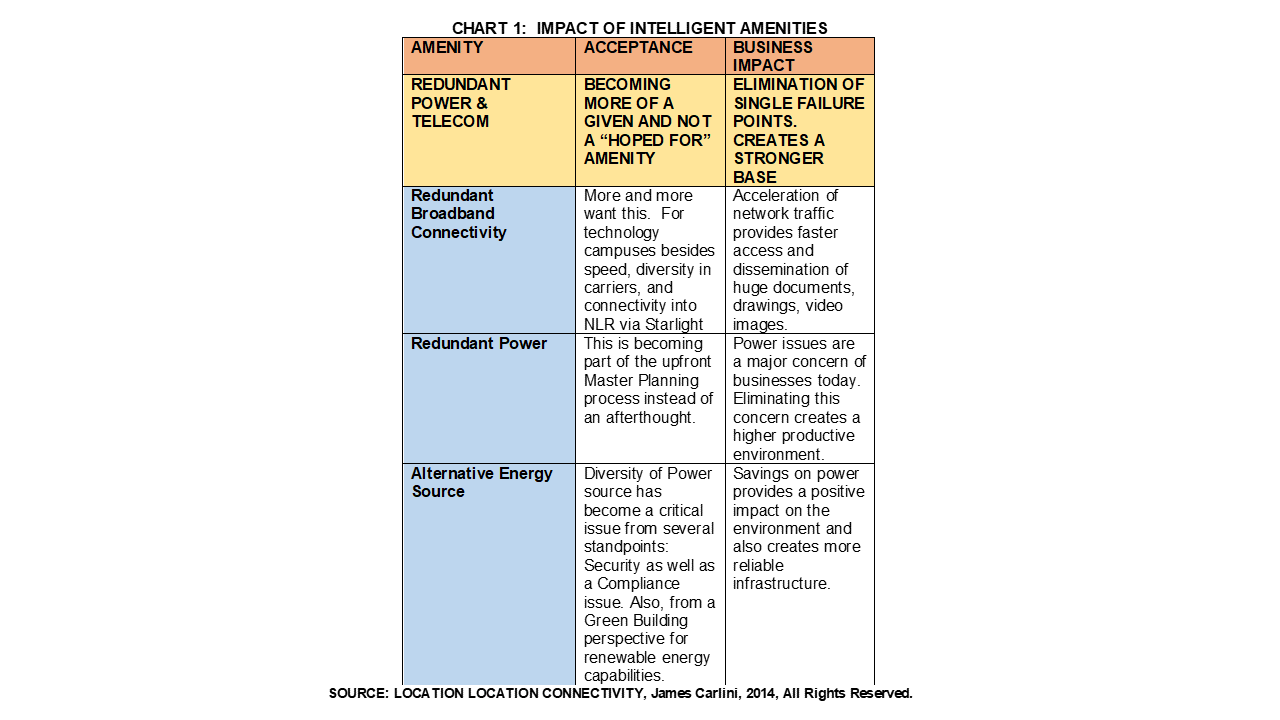Leading-edge Cities will NOT Maintain Their Position with Obsolete Infrastructure.
We are in a post-Pandemic economy where there has been a paradigm shift happening in commercial leasing since 2020. This shift, which is focused on shrinking the amount of commercial space needed by corporate tenants, has permanently changed demand for office space and has impacted the concepts for Smart Cities.
As pointed out in an earlier article, “about 97% of the office buildings in most major downtown areas and business campuses in suburban areas are technologically obsolete. They were all designed to have a single connection running to one substation on the power grid or one central office in the communications network to support the facility. That was a good rule of thumb back in the horse-and-buggy days, but we are well beyond that.”
If you are representing a corporate tenant who is looking for office space and you walked into a building that still had all black rotary phones in it, would you even consider it for your business that requires state-of-the-art technologies to support your applications?
No, you would walk right out of that 19th century “antique”. That is the same reaction you should have if you walk into any office building that still has the same supporting infrastructure from back in the days of a rotary telephone: single connections all in one route to one central office and a single connection for all electricity from the power company’s substation.
When working with new businesses and building development, one of the biggest obstacles many have run across is the antiquated rule-of-thumb established back in the late 19th century for commercial buildings and later, commercial office parks by the utilities. “A single connection should suffice for a building to be connected to the power substation or the network central office,” is still the mindset of many working in the public utilities.
This type of industrial age thinking, which is still prevalent in management in most utilities, is not only difficult to overcome in a single location, but it must also be overcome on a regional basis. Just as the processes and technologies have had to be upgraded and advanced within buildings since the 1920s and 1930s, so does the underlying infrastructure supporting those buildings need to be advanced and upgraded as well as their “rules-of-thumb”.
Intelligent buildings and next-generation intelligent business campuses (IBCs) require redundant power and connectivity so they can support mission critical applications.
Intelligent amenities like broadband connectivity, shared computer resources and other shared tenant services (like sharing a generator for back-up of mission critical systems) have to be understood on how they would affect the design and cost of the building as well as the marketing and leasing of the building to potential tenants. (See Chart 1)

Intelligent buildings and these next-generation office parks (IBCs) are focused on attracting sophisticated corporate tenants which require intelligent amenities such as redundant and diverse power supplies as well as multiple-gigabit connectivity provided by several network carriers.
One of the key ingredients of master planning is insuring redundant broadband connectivity coming into a building or business campus on diverse routing and the ability to add this amenity upfront along with redundant power requirements as part of the overall layout of a campus environment. Broadband connectivity should be multiple l00-gigabit per second connections or above in an intelligent business campus (IBC).
ECONOMIC DEVELOPMENT EQUALS BROADBAND CONNECTIVITY.
Over 35 years ago, intelligent buildings were talked about as a new concept to add technology to a building to make it more effective and efficient in the areas of communications, information technologies and building automation. The concept of Shared Tenant Services (STS) was developed and the idea of sharing the cost for adding technology to the building to serve all the tenants was a basic principle of this concept. This was implemented in the first-generation of Intelligent Buildings.
Fifteen years ago, site selection teams did not have “broadband connectivity” in their “Top 10 list” for choosing a location. As more corporations added applications that were deemed “Mission Critical” the requirement of having high-speed broadband connectivity became a must-have, and not hoped-for.
In the last couple of years, it has risen to being one of the top three criteria. Hence, the importance of “location, location, location” in commercial real estate has evolved to “location, location, connectivity”. Those working in strategic planning and customer engineering within utilities need to understand this critical shift in requirements. Both connectivity and power need to be redundant and diverse in their routing to buildings and next-generation office parks.
The concept of the intelligent business campus has come of age as industry seeks out high-performance real estate platforms to launch and maintain state-of-the-art facilities supporting their core businesses. In this case, high performance means high profitability through high occupancy, a defined theme, and utilization of redundant power grids and diversified broadband connectivity as well as high security, both physical and cybersecurity, for the entire development.
These next-generation business campus concepts began to appear globally over two decades ago with Taiwan declaring a focus on building next-generation, intelligent industry parks (IIPs) in a government initiative in 1999. This next-generation business park was to be focused on a single industrial sector, like integrated circuits, computer printers, or some other product that would be taken from the initial stages of Research & Development to manufacturing, to distribution all in one single location.
International examples emerged in China (Sunward Park), Hong Kong (Cyberport), Taiwan (Far Glory Park and others), and the DuPage Business Center (an 800-acre park in Illinois) within the next decade. These various locations have applied next-generation technology and intelligent amenities like redundant power and multiple network carriers supporting their respective industrial parks to generate enhanced economic development in their regions.
“BEST PRACTICES” ARE A MOVING TARGET
What was state-of-the-art last year is obsolete this year when it comes to many technologies and business operations. Organizations clinging to their “Best Practices” from decades ago are clinging to obsolete ways of work.
If the municipalities as well as the state want to be competitive in attracting and maintaining internet-age corporations which create jobs and strengthen the regional economy and its viability, they must work with the utilities in developing a more current perspective on “Best Practices” and adopt new rules-of-thumb for providing redundant connections as well as diverse routing to these businesses which have mission critical applications running in various commercial buildings.
Today, those cities failing to advance their thinking will lose those businesses who are current corporate tenants as more and more reduce their requirements for general office space and begin to require less space.
This office space reduction initiative is real, and it is causing the higher vacancy rates that we are seeing in more and more cities globally. In many cases, businesses have cut back over 50% of the pre-Pandemic requirements.
In one case in a major city in the Midwest, after cutting over 50% of their overall leasing requirements, this business consolidated all their people into one downtown office. With so many continuing to “work-from-home”, they set up an office with only 25 desks to accommodate 700 people. Imagine 80-90 businesses doing the same thing when before, they would have had to accommodate 700 people in offices, the final space has shrunk to supporting 3% of that number. Vacancy rates will continue to soar as more companies reduce their corporate footprint.
The only businesses looking for more space will be ones which require more sophisticated space, “intelligent space”, within the building. That intelligent space needs to be able to support mission critical applications which means redundant power and broadband connectivity coming in on diverse routing.
Today, companies’ site selection committees demand locations which can provide redundant power and broadband connectivity to their facilities, whether that be a single building or part of a multi-building, intelligent business campus (IBC). Utilities in those cities and regions which don’t build out redundant infrastructure will add to the local job erosion and negatively impact regional sustainability.
State government and municipal leaders also need to be aware of this shift and begin to see the benefits of intelligent infrastructure supporting these next-generation office buildings and office parks. They will reap the economic benefits other cities and regions will lose – job creation. This is a higher priority than “Green Initiatives” and should be treated as such. If a building cannot support mission critical applications, it will remain vacant and then there is no need to even look at “Green Initiatives”. You need to get the building occupied first.
Many in real estate, government, and utilities have yet to understand this paradigm shift to intelligent amenities that include broadband connectivity, diverse power sources and other communications-based applications in single commercial properties, let alone newer campuses of synergistic businesses and functional operations, where intelligent buildings have now been clustered instead of built in a stand-alone environment.
Those who understand the demands of today’s corporate tenants, and who must succeed in competitive global markets, need to understand how to use these concepts in buildings, on business campuses, and next-generation office parks.
The bottom line is that broadband connectivity as well as redundant power, are becoming a major differentiating amenity for sophisticated business tenants choosing one location over the other. Property managers cannot escape from this fact and neither can state and local governments who rely on a vibrant tax base to support their operations.
Areas which do not have adequate access to broadband connectivity and redundant and diverse feeds for both power and connectivity are starting to feel the loss of interest by organizations who are locating or re-locating their facilities to regions that can provide a better infrastructure.
Further, more municipalities and regions are also trying to become established centers for economic development, global trade and job growth. To facilitate this phenomenon, municipalities around the world have been promoting the idea of intelligent building campus.
.
This approach confirms my long-held observation that economic development equals broadband connectivity, and that broadband connectivity equals jobs.


